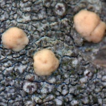
Necrosis of Microcystis aeruginosa causing tannin derivatives in Rhus chinensis stem.
Sign Up to like & getrecommendations! Published in 2022 at "Pest management science"
DOI: 10.1002/ps.7227
Abstract: BACKGROUND Algal infestation in Korean lakes, rivers, and in agroecosystems is a catastrophic problem resulting in contaminated drinking and agricultural irrigation water. Developing allelochemical-based algicides has previously faced difficulties, including dosage requirements and chemical instability.… read more here.
Keywords: chinensis stem; tannin; tannin derivatives; rhus chinensis ... See more keywords

Lead accumulation and biochemical responses in Rhus chinensis Mill to the addition of organic acids in lead contaminated soils
Sign Up to like & getrecommendations! Published in 2023 at "RSC Advances"
DOI: 10.1039/d2ra07466d
Abstract: Adding organic acid is an effective approach to assist phytoremediation. The effects of organic acids on phytoremediation efficiency are unknown in Rhus chinensis. This study aimed to evaluate the effect of citric acid (CA) and… read more here.
Keywords: phytoremediation; acid; organic acids; organic acid ... See more keywords

Identification and Comparison of Tannins in Gall of Rhus chinensis Mill. and Gall of Quercus infectoria Oliv. by High-Performance Liquid Chromatography-Electrospray Mass Spectrometry.
Sign Up to like & getrecommendations! Published in 2020 at "Journal of chromatographic science"
DOI: 10.1093/chromsci/bmz096
Abstract: Gall of Rhus chinensis Mill. (Chinese galls) and gall of Quercus infectoria Oliv. (Turkish galls) have similar applications and chemical compositions, and their extracts have been widely used for industrial production and for medicinal applications.… read more here.
Keywords: rhus chinensis; chinese galls; gall rhus; galls turkish ... See more keywords

The Anti-Tumor Effect and Mechanism of Triterpenoids in Rhus chinensis Mill. on Reversing Effector CD8+ T-cells Dysfunction by Targeting Glycolysis Pathways in Colorectal Cancer
Sign Up to like & getrecommendations! Published in 2021 at "Integrative Cancer Therapies"
DOI: 10.1177/15347354211017219
Abstract: Rhus chinensis Mill. is a traditional Chinese medicine (TCM) which is commonly used for cancer treatments. Our previous work had proven that triterpenoids of Rhus chinensis (TER) could effectively regulate glycolysis involved in colorectal cancer… read more here.
Keywords: cancer; cd8 cells; dysfunction; rhus chinensis ... See more keywords

Variation among the Complete Chloroplast Genomes of the Sumac Species Rhus chinensis: Reannotation and Comparative Analysis
Sign Up to like & getrecommendations! Published in 2022 at "Genes"
DOI: 10.3390/genes13111936
Abstract: The sumac Rhus chinensis Mill. is an economically and ecologically important shrub or tree species in the family of Anacardiaceae with a wide distribution in East to Southeast Asia. We assembled the complete chloroplast genome… read more here.
Keywords: complete chloroplast; chloroplast; chloroplast genomes; analysis ... See more keywords

Protective Effect of Rhus chinensis Mill. Fruits on 3,5-Diethoxycarbonyl-1,4-Dihydrocollidine-Induced Cholestasis in Mice via Ameliorating Oxidative Stress and Inflammation
Sign Up to like & getrecommendations! Published in 2022 at "Nutrients"
DOI: 10.3390/nu14194090
Abstract: This study focused on the preventive effects of the extracts of Rhus chinensis Mill. (RCM) fruits on cholestasis induced by 3,5-diethoxycarbonyl-1,4-dihydrocollidine (DDC) in mice. The results showed that RCM extracts could significantly ameliorate DDC-induced cholestasis… read more here.
Keywords: cholestasis; diethoxycarbonyl dihydrocollidine; mice; rhus chinensis ... See more keywords

Taxonomy of two synnematal fungal species from Rhus chinensis, with Flavignomonia gen. nov. described
Sign Up to like & getrecommendations! Published in 2019 at "MycoKeys"
DOI: 10.3897/mycokeys.60.46395
Abstract: Abstract Rhus chinensis represents a commercially and ecologically important tree species in China, but suffers from canker diseases in Jiangxi Province. Synnemata, pycnidia and ascomata were discovered on cankered tissues. Strains were obtained from single… read more here.
Keywords: chinensis; rhus chinensis; taxonomy two; synnematal fungal ... See more keywords